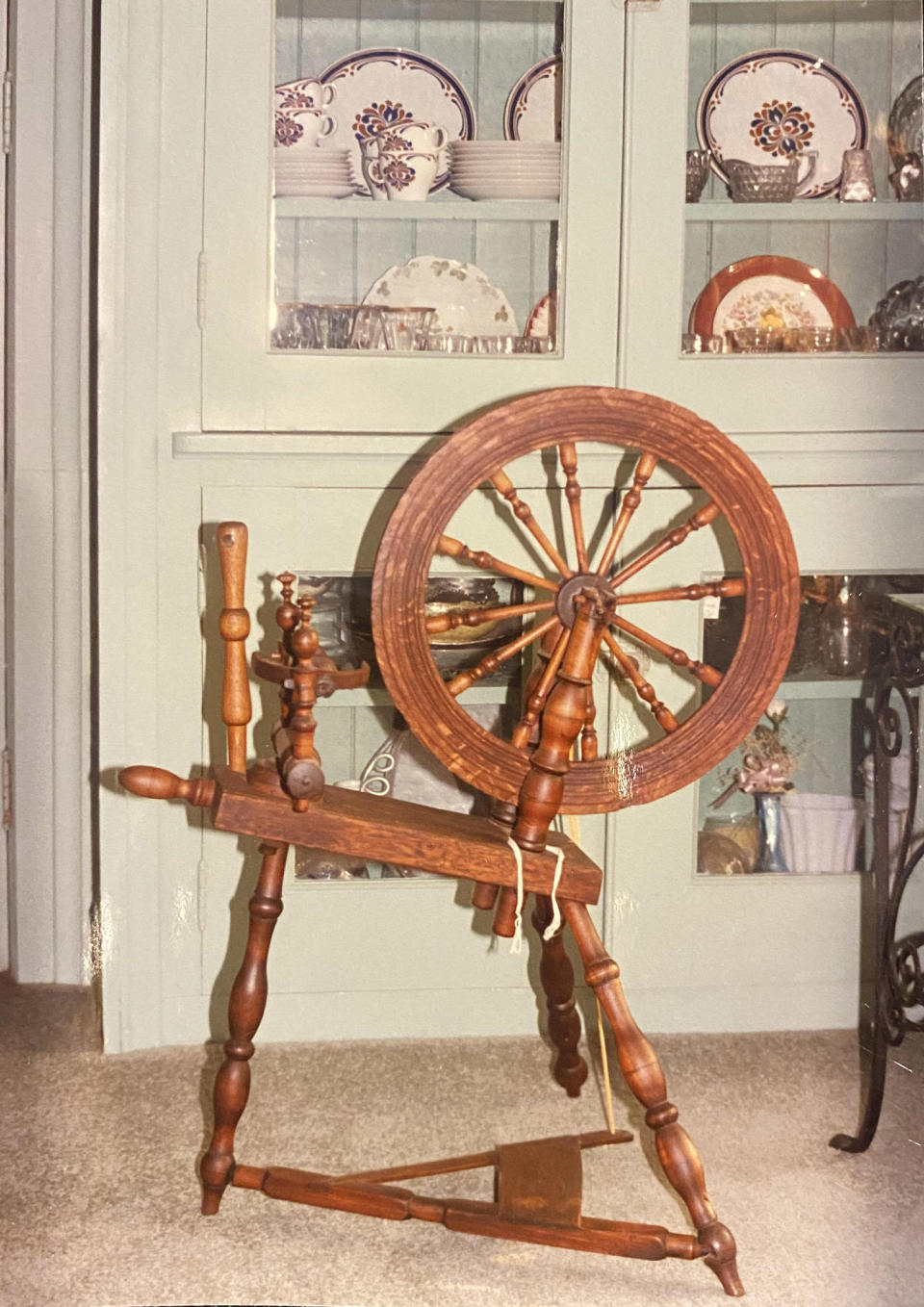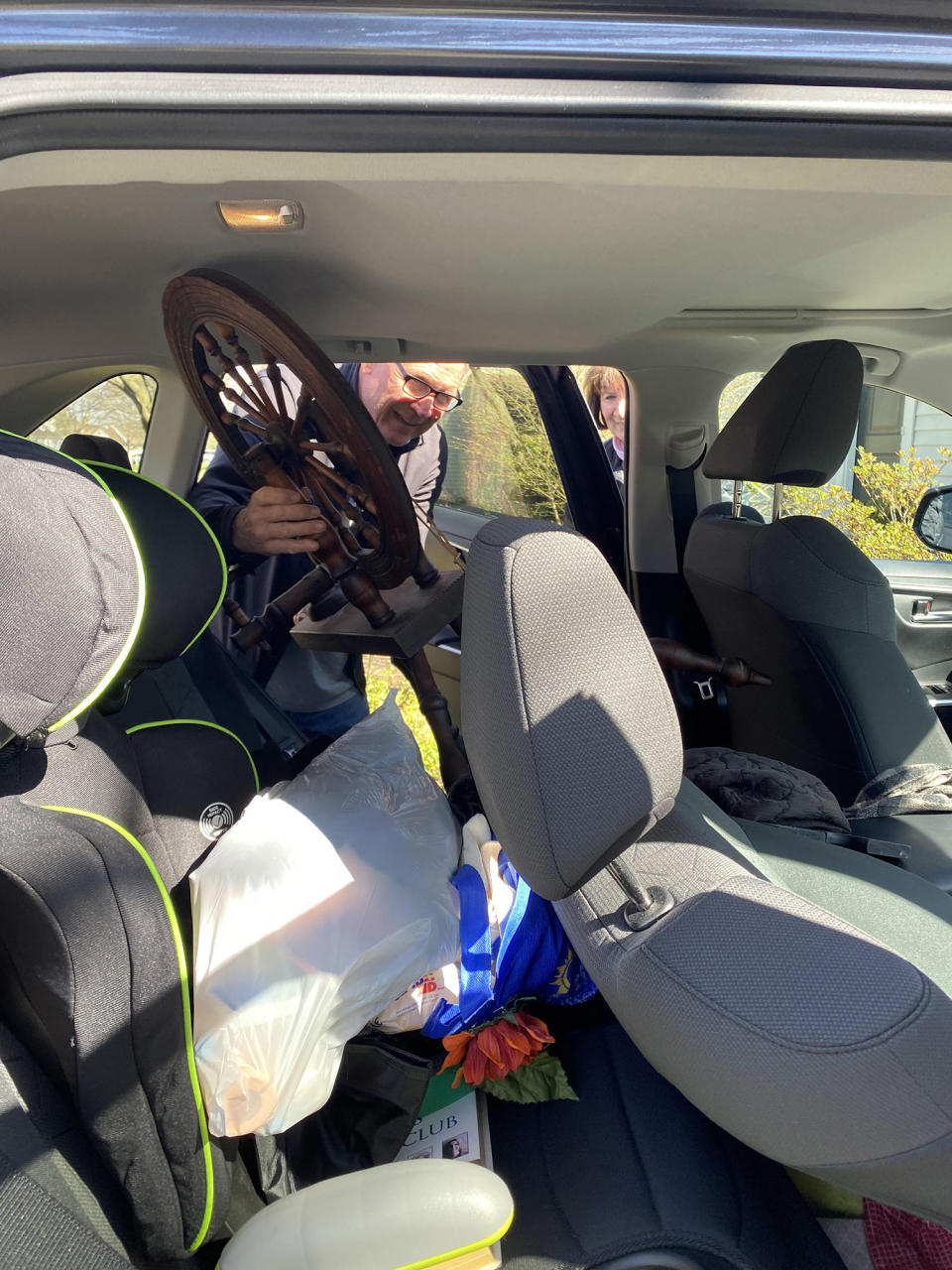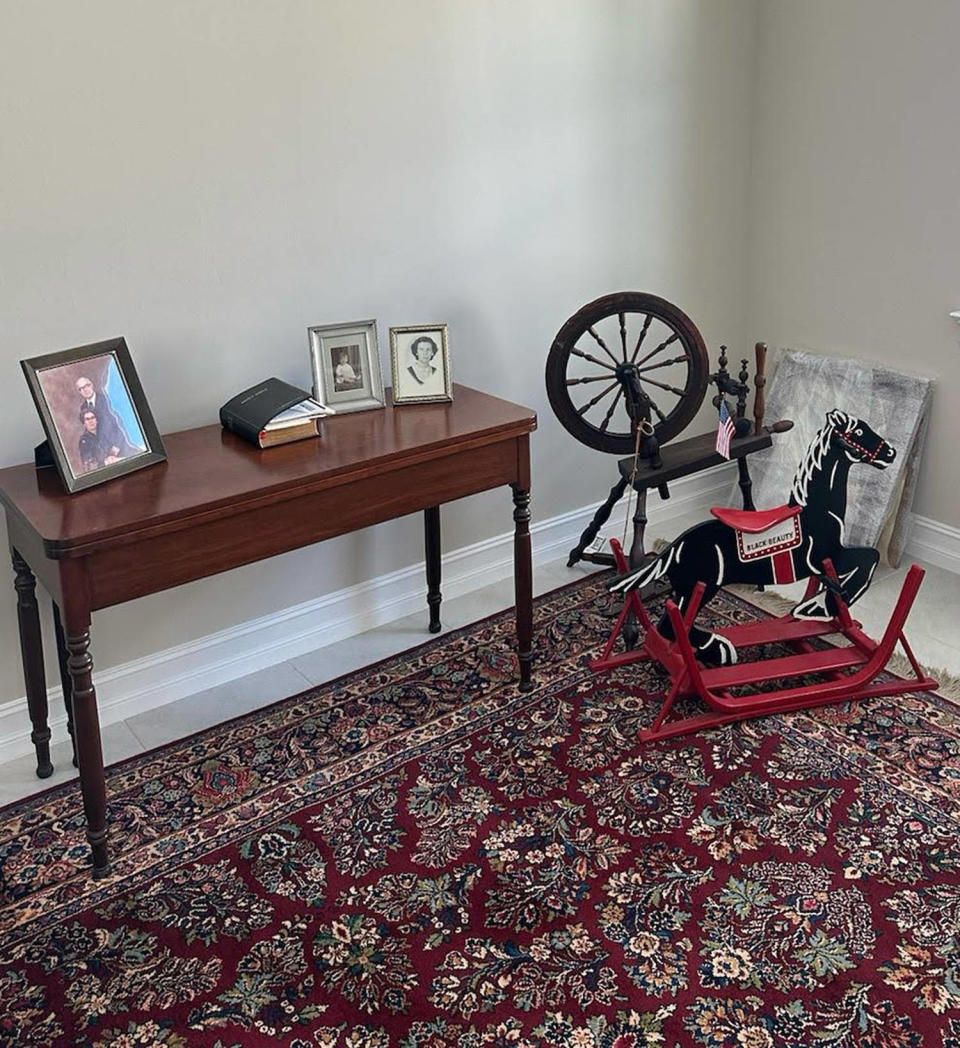My mom was downsizing. But convincing her to get rid of her stuff felt impossible
The spinning wheel had to go — nothing could have been more obvious.
I had discovered it in a dusty upstairs bedroom of my childhood home in Pennsylvania, the one my mother was leaving behind after 40 years to move closer to me in Oregon.
“I didn’t even know it was up there!” my mom said.
“Well, that’s the problem,” I said. “You don’t even know what you have.”
When I signed up to be the person to help my mom downsize, I was sure I was just the right member of the family for the job. I let go of things easily — happily, even. For me, donating items is a gleeful act. Editing a shelf feels like bliss, decluttering like meditation. If someone comes to my home and admires something I own, I often give it to them.

I wasn’t always this way. As a child, I coveted, I hoarded, I once stole a neighbor’s favorite Barbie. But as I grew into adulthood and stepped into the role of household manager (aka “Keeper of the Things”) I have discovered that I do best — I feel most at ease — when rooms feel balanced, which is to say that they have just the right amount of stuff in them.
Discovering this about myself has given me a level of detachment to objects that rubs hard against my family of sentimentalists. My mom’s generation still talks about who got the upholstered settee from the estate of their own family home, or who is getting the pie cupboard when they pass on.
But back to that spinning wheel. I had gone home to help my mother decide what to bring with her in her next life phase, so it seemed obvious to me that museum pieces of past technological advancements were a clear “discard.” So I lugged the antique spinning wheel downstairs and placed it in the center of the living room.
This is a common practice in the world of home organization and downsizing, by the way. It allows you to view objects with fresh eyes — shake up the energy around them a bit.
“I don’t think there’s room for this in the new place,” I told her.
“You had better ask your sister if she wants it first,” she said.
I pictured my sister’s house in Arizona, all marble and modern lighting and silver fixtures.
“Maybe we could sell it?” I asked.
If you want to throw your mother into a state of depression, I suggest offering to look up how much her antiques are worth. Watch her face crumble as you repeat “brown is down,” the shorthand sellers have been using for decades to explain why my generation doesn’t want their parents’ furniture.
Still, I understand attachment. The spinning wheel had held pride of place in my grandparents’ Victorian home, the most important setting for all of our childhoods. Could there have been any richer symbol from my family’s past than the tool used to create yarn, to clothe each other? I pictured it among the prized possessions from their trip across the ocean.
I imagined these unknown ancestors, their feet pumping, as I searched prices for spinning wheels. Values run wild, from less than $100 to $1,500 or more for a fully restored, artisan-made stunner, but a few questions emerge. Is it an object of great decorative beauty? Does it work — and would a yarn hobbyist enjoy using it? Is it in good condition? Does it have a specific maker’s mark? The answers to these can determine whether you might be operating in the soulfully debilitating category of something you have to pay to get rid of.
All of my questions became moot when I called a local antiques expert. There was no real market for spinning wheels, they said, even in a county that draws antique shoppers from three states away.
“Call Gary,” my mom said. She meant Gary Alvord at Next to New, a consignment store out in Amish country. We had already done a reconnaissance mission to the shop to get a sense of what product appealed.
Gary is the nicest guy in the world to tell you your stuff isn’t worth anything.
“I will pay you $200 not to call Gary,” I said.
Instead, I texted a picture of the spinning wheel to my sister in Arizona and my cousin in Washington state: “Who wants this?”
“Yay, the spinning wheel!” my cousin texted back.
“You can’t get rid of the spinning wheel,” texted my sister.
By the time the three of us came along, with our ’80s childhoods and obsessive afternoons of MTV, the spinning wheel had become a decor object. We all longed to spin it. Each of us had been chastened when caught. Eventually we stopped trying, and the wheel had become nothing more than a wayfinding device in the ancestral home: To get to the downstairs bathroom, take a right at the spinning wheel.
But was it beautiful? I guess it had a pretty strong Rumpelstiltskin vibes, which I liked, but it wasn’t that compelling to me as a decor object. It was hard enough to meld styles with my husband without incorporating the affinities of two generations before.
From a design perspective, none of us really needs the exact object from our childhood homes to connect with the past, anyway. All in all, we have much more freedom to tell our stories to ourselves in our home than ever before — and we want these stories to be our own. The spaces we create, in the end, are the stories we have decided to live with.
I gave my mother the news: Someone really must take it, and it was clear that someone was Someone Else.
“Well, we can’t do anything with it anyway because it’s Uncle John’s,” my mom said.
“When does he get here?” I asked.
“Saturday, but first he has to get another storage facility.”
Oh yes, Uncle John. My uncle had met a hotel heiress on a boating trip to the Galapagos Islands and promptly moved to Recife, Brazil. He had taken up Pilates and was eating fish every day while the overflow from his first storage facility had taken up residence in my mother’s home.
It had been six years. His stuff now took up a third of my mom’s house. Before I could move my mom, I had to move him.
The day before he arrived, I yanked out all of his stuff from the upstairs closet and laid it on the bed. I gathered all of the personal care objects, extra tools, so many hats, all in one spot.
“You really shouldn’t be touching his stuff,” my mom said when she saw my progress.
“Possession is nine-tenths of the law,” I said.
“When he’s in town he checks in on it,” she said.
“I just need to make sure that he takes it this time,” I said.
John arrived that Saturday afternoon to hugs and kisses, but within minutes, he had removed himself to the far end of the backyard where he sat burning documents next to a makeshift fireplace for six hours. I looked at the spinning wheel, wondering if he needed some wood.
“Em! There’s just so much stuff!” he said when he finally came back to the house.
I led him upstairs, where a rainbow collection of 43 button-down shirts awaited him.
“I’m happy to donate whatever you don’t want to take,” I said.
“Em! These were really good shirts!” he said, stuffing them all into a bag.
The next morning, he stood in the living room, hands on his hips, considering the spinning wheel. The last picture I snapped of him was of his giant self loading an old spinning wheel into the back of a rented Camry to haul off to his second storage facility.

I texted the image to my far-flung family and a chorus of cheers pinged on my phone for five minutes. My mom smiled as she taped up another box.
A feeling crept through me: Perhaps I had been wrong about the spinning wheel.
I had been so afraid that my mom would change her mind about moving to be near me that I had wanted to push her through her grief faster. I didn’t care if my mother showed up in Oregon with nothing to her name. But I was operating as if feelings were stuff you could just discard, not something that you should sit with, turn over in your hands, and consider until you were ready to set them down.

Months later, after my mother had taken up residence in a townhome nine-tenths of a mile from me, I sat down to a meal with her in her place. I looked around the room, at the objects that collected the life she had left behind, everything symbolic. She had set the table with my grandmother’s plates.
“Limoges,” she reminded me. “Your sister’s getting them.”
I pushed meat around with my fork like a child. I was thinking about the spinning wheel, hoping that she felt OK now since she knew exactly where it was.
“I mean, I get it,” I told her. “Just imagine — the hands of our ancestors pulling that yarn, their feet pumping. There are probably still oils from their hands on it.”
“Oh — the spinning wheel?” my mom said. “My parents picked that old thing up at an auction in the ’60s. No one in our family has ever used it.”
This article was originally published on TODAY.com

